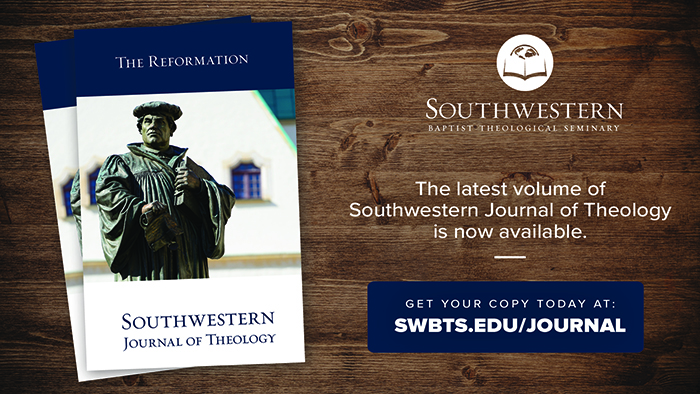Journal of Theology examines acts that brought Reformation to fruition

This fall marks the 500th anniversary of Martin Luther nailing his 95 theses to the Castle Church door in Wittenberg, launching the Protestant Reformation. Southwestern professor Madison Grace says, “By this one act, a movement was born, a leader was formed, and European society itself was turned upside down.”
In the latest issue of the Southwestern Journal of Theology, Southwestern Seminary commemorates this important event through the publication a variety of articles related to the Reformation. The journal features works by Southwestern professors, a visiting lecturer, and Southwestern President Paige Patterson.
Grace, managing editor of the journal, writes in the opening editorial, “As we celebrate the 500th anniversary of the Reformation, may we celebrate Luther, Calvin and the other great reformers. May we also look deeper into this time period and learn from those who have been marginalized by history but who have also stood their ground in their places for the principles of the Reformation, principles that are grounded in God’s Word.”
Among the journal’s most significant features is a two-part article about the Spanish Reformation. In the articles, Emilio Monjo Bellido, director of the Center for the Investigation and Memory of Spanish Protestantism in Seville, Spain, examines the work of Spanish reformers whose stories were not told until recently.
In 2009, Monjo presented two lectures on the Reformation in Spain at Southwestern. These lectures have been translated and are published here for the first time as “The Reformation in Spain in the Sixteenth Century (Parts I & II).” Monjo takes a close look at key men who championed the principles of the Reformation, and he gives readers an insider’s look at reformers in Spain who were willing to suffer the consequences of questioning the Catholic church.
In his article “The Theology of the Reformers,” Southwestern President Paige Patterson introduces readers to other Reformation advocates who do not often receive scrutiny. In particular, he highlights a group of Anabaptists sometimes known as the Swiss Brethren, the forerunners of the Mennonites. “The Anabaptists insisted that a genuine church consisted only of people who had experienced the new birth and covenanted together with other believers in baptism to serve the Lord with all the devotion of their lives,” Patterson writes.
The journal’s final two essays relate to Martin Luther. Luther was bold and pioneering, but as a man, he also was errant. Friedhelm Jung, professor of systematic theology at Southwestern, raises that point in his article, “Was Luther a Bible Critic?” Jung writes, “Even if he cannot be labeled a Bible critic in today’s sense, because he neither distinguishes between Bible and Word of God nor urges skeptic-critical reading of the Bible, he nevertheless employs certain elements of biblical criticism.”
Finally, J. Tristan Hurley, adjunct professor at Scarborough College, raises the question of missions with his article “Missiologica Crucis: Martin Luther’s Missiology.” Hurley looks to discover whether the great reformer Luther had a missiological impulse.
“Luther considered the people of God to be a tool for the expansion of the gospel,” Hurley writes. “This equates to the idea that all Christians be involved in missions through the proclamation of the good news. With the idea communio sanctorum or the priesthood of all believers, Luther equates a part of the expansion of the gospel to all believers; hence the nature of the people of God/the church is the proclamation of the gospel.”
A digital version of the Southwestern Journal of Theology is available for download here.



